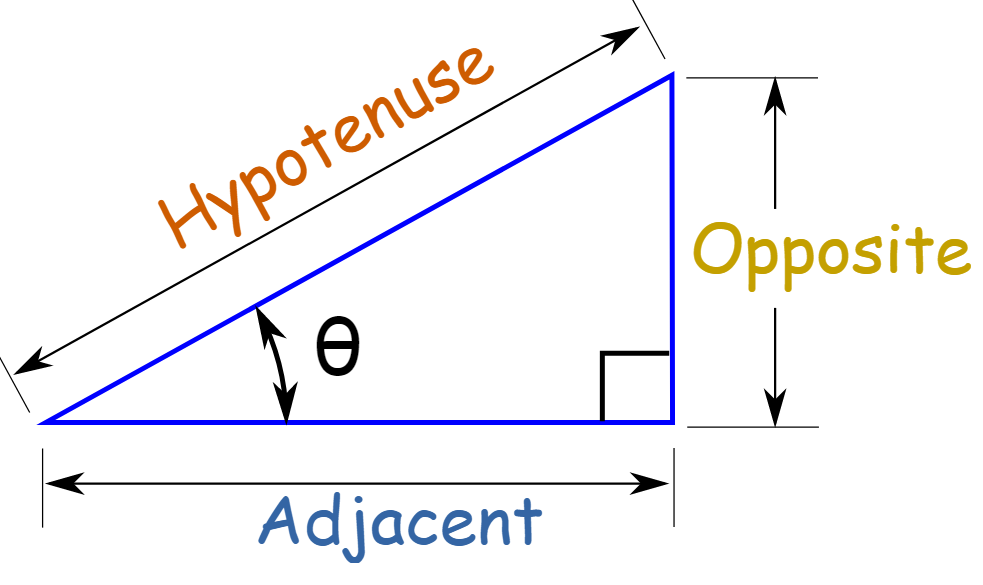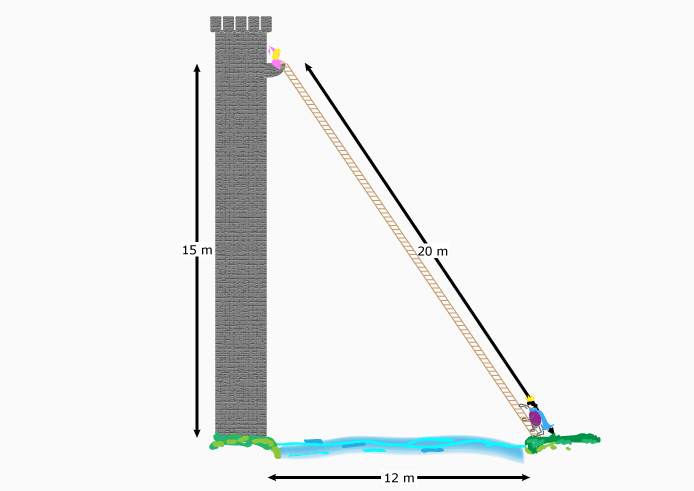Table of Contents
SOHCAHTOA is a mnemonic device that is used in mathematics to remember the definitions of the three most common trigonometric functions. Sine, cosine, and tangent are the three main functions in trigonometry. They’re all based on ratios obtained from a right triangle. Before we can discuss what ratios work for which function, we need to label the right triangle. The ratios that allow you to determine the sine, cosine, and tangent of a right triangle are: Opposite is the side opposite the angle in question, adjacent is the side next to the angle in question, and the hypotenuse is the longest side of a right triangle.
The hypotenuse is always opposite to the right angle. The sine of an angle is equal to the side opposite the angle divided by the hypotenuse. The cosine of an angle is equal to the side adjacent to the angle divided by the hypotenuse. The tangent of an angle is equal to the side opposite the angle divided by the side adjacent to the angle.
SOHCAHTOA
These ratios can be difficult to remember. You might easily get confused and not remember which side goes where. SOHCAHTOA is a mnemonic device helpful for remembering what ratio goes with which function.
- SOH = Sine is Opposite over Hypotenuse
- CAH = Cosine is Adjacent over Hypotenuse
- TOA = Tangent is Opposite over Adjacent

How To Use SOHCAHTOA?
Memorizing math formulas can be tedious and stressful; what if you forget a key component and use the wrong information to solve problems? SOHCAHTOA is an acronym that exists to help trigonometry students remember how to solve problems related to right triangles.
The three-letter groupings in SOHCAHTOA stand for the following:
SOH: Sine equals Opposite over Hypotenuse.
CAH: Cosine equals Adjacent over Hypotenuse.
TOA: Tangent equals Opposite over Adjacent.
Here, the terms Opposite, Adjacent, and Hypotenuse all refer to the measurement of sides of a right triangle. It’s worth noting that the hypotenuse is the side located opposite the right angle. It’s also the longest side in the triangle. The opposite side refers to the one located opposite the angle with an unknown measurement. Finally, the adjacent side is the one touching the unknown angle.
SOHCAHTOA Definition
SOHCAHTOA is a way of remembering how to compute the sine, cosine, and tangent of an angle. SOH stands for Sine equals Opposite over Hypotenuse. CAH stands for Cosine equals Adjacent over Hypotenuse. TOA stands for Tangent equals Opposite over Adjacent.
SOH-CAH-TOA Example
A mathematically inclined squirrel sits atop a 14-foot tall tree. He spies a nut on the ground some distance away. After careful measurements, he determines the nut is 74º from the base of his tree.
How far away is the nut from:
A) The base of the tree?
B) The math squirrel?
Here is a layout of the problem.

Part A: How far is the nut from the base of the tree?
Looking at our triangle, we see we know the angle and the length of the adjacent side. We want to know the length of the opposite side of the triangle. The part of SOHCAHTOA with these three parts is TOA, or tan θ = opposite/adjacent.
tan θ = opposite / adjacent
tan ( 74º ) = opposite / 14 ft
solve for ‘opposite’
opposite = 14 ft ⋅ tan ( 74º )
opposite = 14 ft ⋅ 3.487
opposite = 48.824 ft
The nut is 48.824 ft from the base of the tree.
Part B: How far is the nut from the math squirrel?
This time, the needed distance is the hypotenuse of the triangle. The part of SOHCAHTOA with both adjacent and hypotenuse is CAH, or cos θ = adjacent/hypotenuse.
cos θ = adjacent / hypotenuse
cos ( 74º ) = 14 ft / hypotenuse
hypotenuse = 14 ft / cos ( 74º )
hypotenuse = 14 ft / 0.276
hypotenuse = 50.791 ft
We can use the Pythagorean Theorem to check our work.
a2 + b2 = c2
(14 ft)2 + (48.824 ft)2 = c2
196 ft2+ 2383.783 ft2= c2
2579.783 ft2 = c2
50.792 ft = c
The two numbers are close enough to account for rounding errors.
A prince has arrived to rescue a princess standing in a tower balcony 15 meters up across a moat 12 meters wide. He knew the princess was high up and there was a moat, so he brought the longest ladder in the kingdom, a 20-meter monster.
A) Is the ladder long enough?
B) If the top of the 20 m ladder touches the balcony, how far away from the tower wall is the bottom of the ladder?
C) What is the angle between the ground and the ladder?

Part A: Is the ladder long enough? To know if the ladder is long enough, we need to know how long it needs to be. At the very least, the prince’s ladder must reach the 15-meter balcony from the edge of the 12-meter moat. Use the Pythagorean theorem to find out how far up the tower wall a 20-meter ladder will reach.
a2 + b2 = c2
height2 + moat2 = ladder2
height2 = ladder2 – moat2
height2 = (20 m)2 – (12 m)2
height2 = 400 m2 – 144 m2
height2 = 256 m2
height = 16 m
A 20-meter ladder can reach 16 meters up the side of the tower. This is a meter longer than the 15 meters needed to reach the princess balcony.
Part B: When the ladder touches the edge of the balcony, how far away from the tower wall is the bottom of the ladder?
The first part measured the height the 20-meter ladder reached when the ladder was placed at the edge of the moat. We found we had more ladder than needed. If the ladder touches the balcony, we know the height it reaches is 15 meters. The ladder is still 20 meters long. We just need to find out how far from the tower to stick the bottom of the ladder. Use the Pythagorean theorem again.
a2 + b2 = c2
(balcony height)2 + (ground distance)2 = ladder2
(ground distance)2 = ladder2 – (balcony height)2
(ground distance)2 = (20 m)2 – (15 m)2
(ground distance)2 = 400 m2 – 225 m2
(ground distance)2 = 175 m2
ground distance = 13.23 m
The ladder’s base is 13.23 m away from the tower.
Part C: What is the angle between the ground and the ladder?
We were given the height of the balcony, which in this case is the ‘opposite’ side of the triangle from the needed angle. We also know the length of the ladder that forms the hypotenuse of the triangle. The part of SOHCAHTOA that has both of these parts is SOH or sin θ = opposite/hypotenuse. Use this to solve for the angle.
sin θ = opposite/hypotenuse
sin θ = 15 m / 20 m
sin θ = 0.75
θ = sin-1(0.75)
θ = 48.59°
You can check your work in Part B if you use the answer we got as the ‘adjacent’ side of the triangle.
If you use the ladder as the hypotenuse, use CAH, or cos θ = adjacent/hypotenuse.
cos θ = adjacent / hypotenuse
cos θ = 13.23 m / 20 m
cos θ = 0.662
θ = cos-1(0.662)
θ = 48.59°
The angle matches the value above.
If you choose the balcony height as the opposite side, use TOA, or tan θ = opposite/adjacent
tan θ = opposite / adjacent
tan θ = 15 m / 13.23 m
tan θ = 1.134
θ = tan-1(1.134)
θ = 48.59°
Pretty neat how it doesn’t really matter which sides of the right triangle you use, as long as you use the correct part of SOHCAHTOA.
What Is The Formula For Soh Cah Toa?
The Sine Of An Angle Is Equal To The Side Opposite The Angle Divided By The Hypotenuse. The Cosine Of An Angle Is Equal To The Side Adjacent To The Angle Divided By The Hypotenuse. The Tangent Of An Angle Is Equal To The Side Opposite The Angle Divided By The Side Adjacent To The Angle.
What Is Soh?
Sohcahtoa. A Way Of Remembering How To Compute The Sine, Cosine, And Tangent Of An Angle. Soh Stands For Sine Equals Opposite Over Hypotenuse. Cah Stands For Cosine Equals Adjacent Over Hypotenuse. Toa Stands For Tangent Equals Opposite Over Adjacent.
Who Invented Sohcahtoa?
Hipparchus Is Credited As Generalizing Hypsicles’ Idea Of Dividing The Ecliptic Into 360 Degrees, An Idea Borrowed From The Babylonian Astronomers, By Dividing Every Circle Into 360 Degrees (Sarton 287).
What Is The Opposite In Sohcahtoa?
To Remember These, Many People Use Soh Cah Toa, That Is Sin θ = Opposite/Hypotenuse, Cos θ = Adjacent/Hypotenuse, And. Tan θ = Opposite/Adjacent.
Is Sohcahtoa Trigonometry?
And Sine, Cosine, And Tangent Are The Three Main Functions In Trigonometry. They Are Often Shortened To Sin, Cos, And Tan. The Calculation Is Simply One Side Of A Right Angled Triangle Divided By Another Side. We Just Have To Know Which Sides, And That Is Where “Sohcahtoa” Helps.
